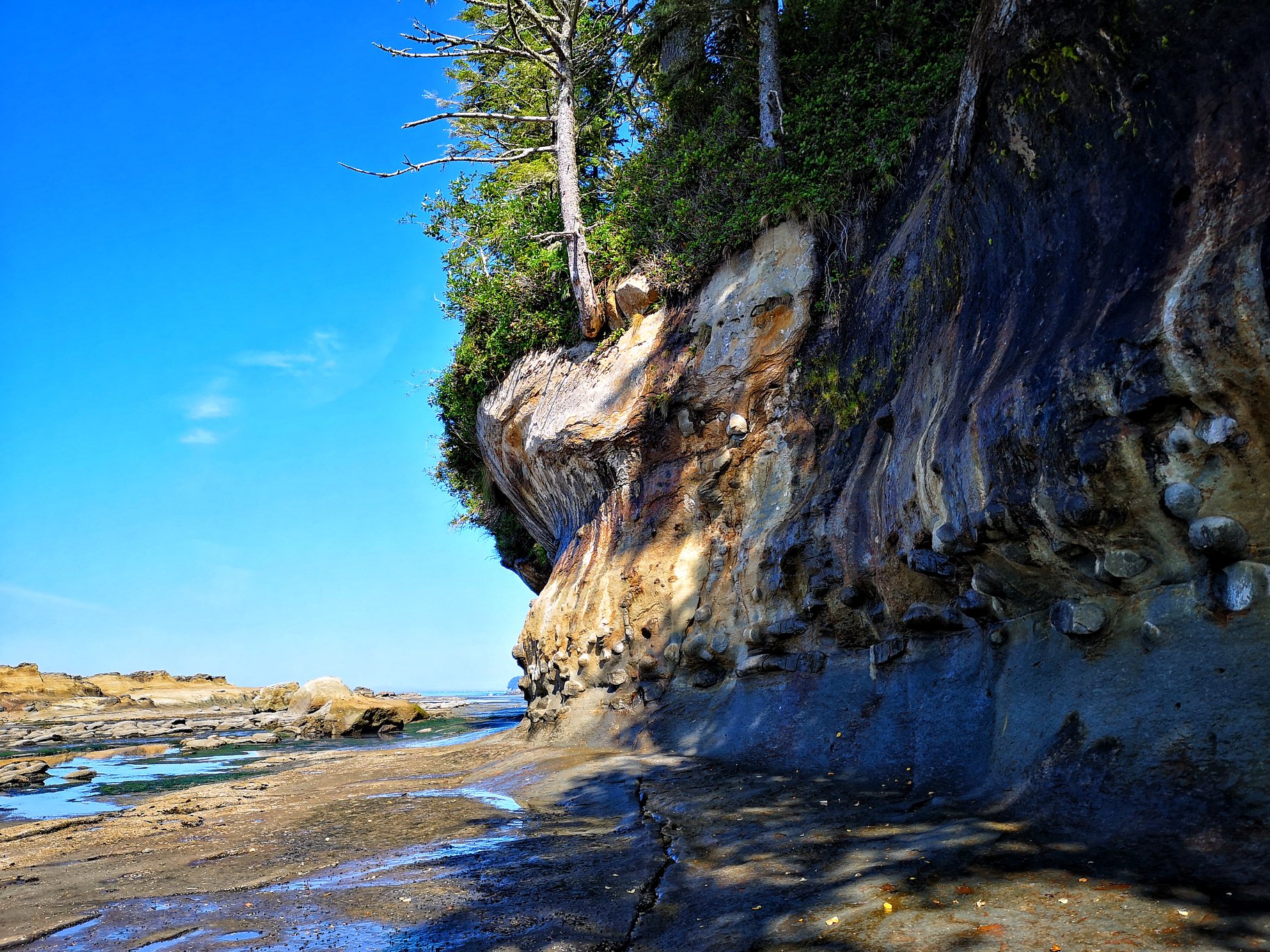West Coast Trail Trip Report: A 6-Day Adventure Along Vancouver Island’s Rugged Coastline
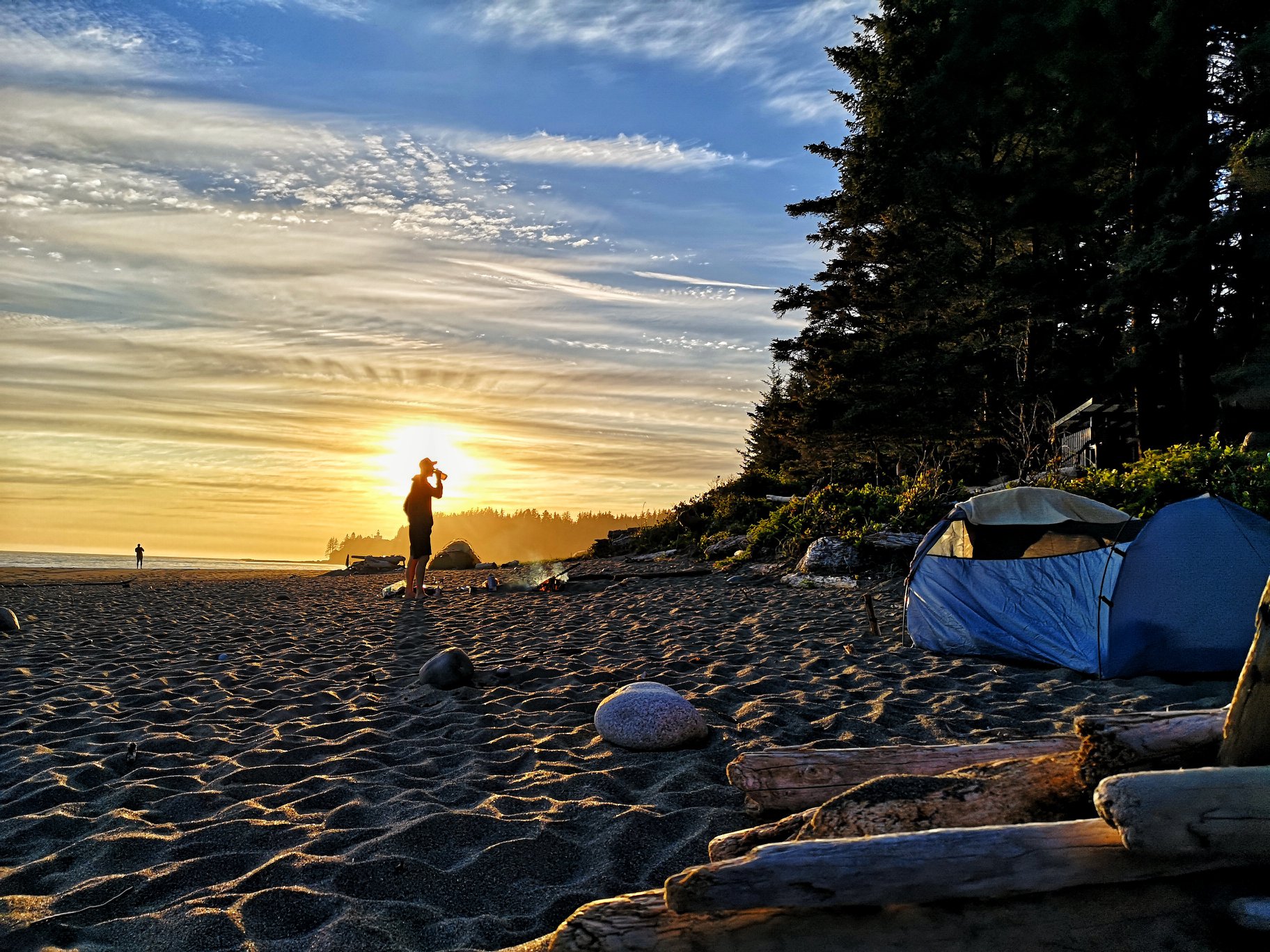
Categories
Hey, It's Karysa! Your outdoor guide, planner & photographer based in Port Alberni on Vancouver Island.
Vancouver Island
Photographer
Hiking the West Coast Trail: A Complete Trip Report
The West Coast Trail is one of Vancouver Island’s most iconic hikes, offering a rugged and rewarding adventure along 75 kilometers of remote coastline. Originally built as a life-saving route for shipwreck survivors, the trail is now a bucket-list destination for hikers seeking dramatic ocean views, lush rainforests, and challenging terrain. It’s a sociable trail making it great for a solo hiking trip because of the amount of people always on it. We met some wonderful people along the way.
This trip report covers my experience, advice, and stories hiking the West Coast Trail as a multi-day backpacking trip. From navigating slippery boardwalks to crossing rivers by cable car, every day brought a new challenge and a deeper appreciation for the wild beauty of the West Coast. If you’re planning your own trek, I’ll share what to expect, essential tips, and insights on how to make the most of this amazing West Coast adventure.
If you are a seasoned backpacker or preparing for your first major hike, this guide will help you hit the trail with confidence. Let’s get into it.
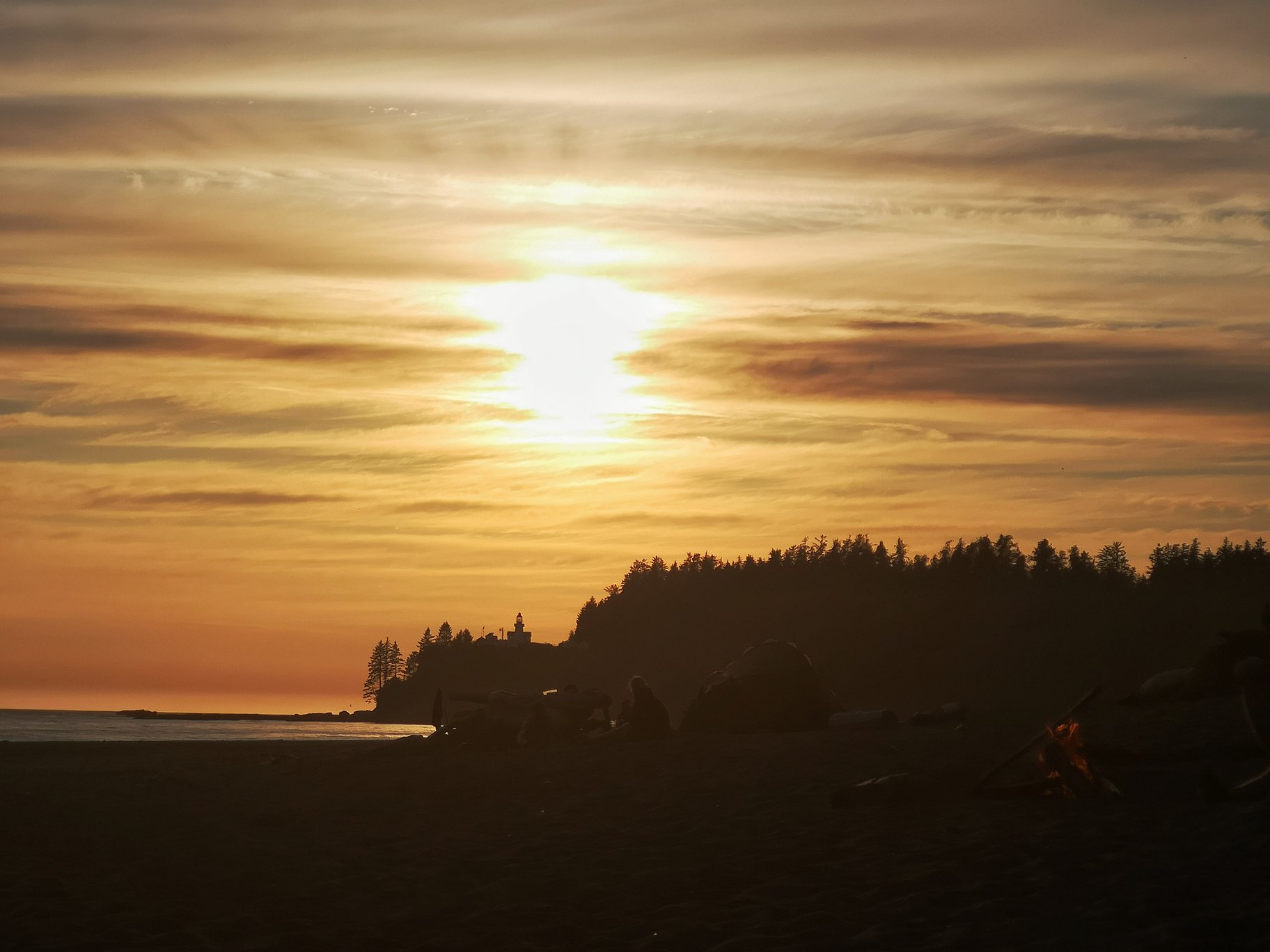
Planning
Distance: 75 kilometers (47 miles).
Elevation Gain: Approximately 1,800 meters (5,900 feet) cumulative over the entire trail.
Trailheads: Pachena Bay (north) and Gordon River (south) — you can hike in either direction.
Duration: Typically 5 to 7 days.
Difficulty: Strenuous; expect ladders, river crossings, and muddy sections.
Permits: Required and can be booked through Parks Canada. The trail is open from May 1 to September 30.
Campsites: 13 designated campsites along the trail, all first-come, first-served.
Best Time to Hike: June to early September for better weather and lower rainfall.
Transportation: Shuttle and water taxi options are available to get to and from the trailheads.
Wildlife: Expect to see black bears and other wild animals along the trails.
Resources:
WEST COAST TRAIL APP. There is an app you can download or use online. Here you can enter your start date and your camp spots and get super helpful straightforward information about the trail.
West Coast Trail Preparation Guide from Parks Canada – Go to the current year publication. Here is 2025’s.
How to Book:
- Reserve your dates if available at Parks Canada Reservations. Reservations open at a certain date every year and book up quickly!!
- Then plan your shuttle and ferries based on the dates and trail direction you picked. See Reservation info on Parks Canada website.
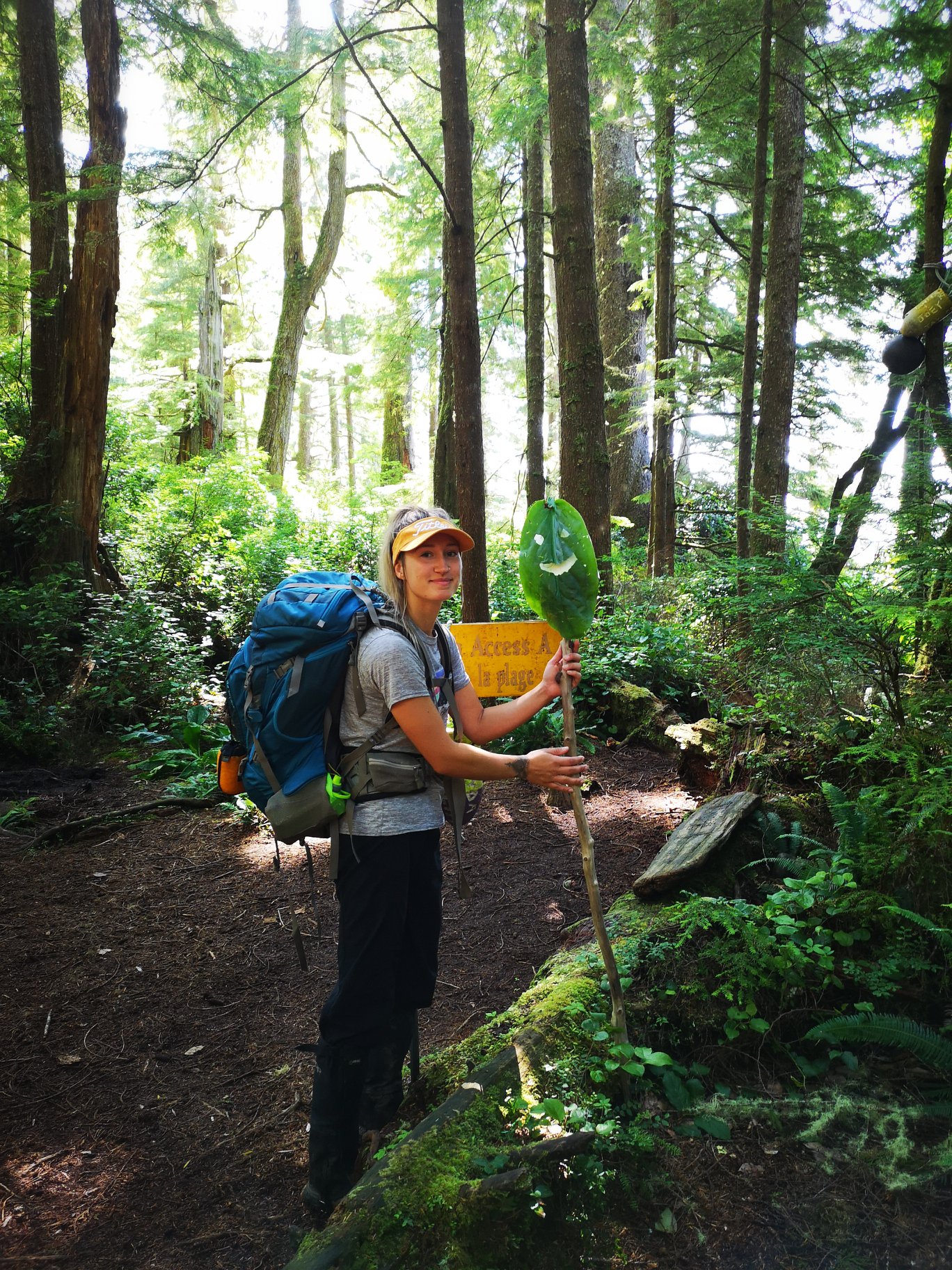
Trip Report
Introduction
So, I have actually hiked this trail 1.5 times. I’ve experienced all the things. The most magical, most incredible thing I’ve ever experienced was my very first night on the West Coast Trail. I went with a larger group and we spent the night at Pachena Bay. We were all galloping along to the ocean at night admiring the stars… until in awe, we started running to the ocean!! Bioluminescence!!
We started waving our hands in the water and it turned bright blue, our footprints glowed as we stepped, and the waves turned vibrant blue as they broke onto the shore. It was the most amazing thing. I didn’t get any pictures because it was one of those intense moments where you didn’t even think of it.
This moment was so impactful to be that my business name (the website you are currently on) is based on this experience, blending the words bioluminescence and “bloom in your essence”. Cool right? I think so. Anyways, back to what you’re here for! This trip report is from doing the entire West Coast Trail starting at Gordon River and ending in Pachena Bay. Enjoy!
Day 1: Gordon River to Thrasher Cove – 5 km
My travels started on July 19th. It was a sunny summer day, and I hitched a ride from my mom starting in Port Alberni. Living on Vancouver Island makes tackling the West Coast Trail easy. There are two main driving routes to reach the Gordon River trailhead. Make sure to download offline maps, as cell service becomes unreliable as you get closer to the area. See my Google Maps route here.
Upon arrival at Gordon River, we checked in and waited for the short water taxi ride across the river, which took about 5 minutes. The taxi is operated by Parks Canada, and it’s essential to reserve your crossing time in advance. While waiting, I met a fellow hiker who was on a redemption trip and told us his story as we boated across. His previous journey ended with a search and rescue evacuation due to an axing himself in the leg. (Pro tip: You won’t need one of those haha)
The Trail Begins
The adventure kicked off with an iconic West Coast Trail feature… ladders. The first climb was a bit daunting, especially with the weight of my pack at its heaviest, and the first thing I saw was a large ladder, but it quickly set the tone for the challenges ahead. Expect to wait your turn during busy times, as groups often take their time navigating the ladders safely.
The first 5 kilometers to Thrasher Cove may sound short, but it’s a steep and technical section. With roughly 200 meters (650 feet) of elevation gain, the trail consists of muddy paths, roots, and occasional slippery boardwalks. It’s a good test of endurance and balance. The trail is all inland and I was thankful once I saw the ocean and was ready for camp.
Camping at Thrasher Cove
Thrasher Cove isn’t the most popular campsite on the trail since it’s smaller and can fill up quickly. However, it was the best choice for our trip plans. The beachside views were beautiful, and we were lucky to find a good spot to pitch our tent. Most sites have designated bear caches and outhouses. You can’t go wrong anywhere on this trail. Arriving early is ideal if you’re planning to get a good spot.
One essential thing to keep in mind
Tide planning starts beyond Thrasher Cove. If you plan to hike along the beach instead of the forest trail, check the tide tables to ensure safe passage. Some areas become impassable at high tide.
Despite the stories of axe mishaps and the steep climbs, our first day ended on a high note. Relaxing on the beach, watching the sunset, and listening to the crashing waves made for a perfect start to the journey.
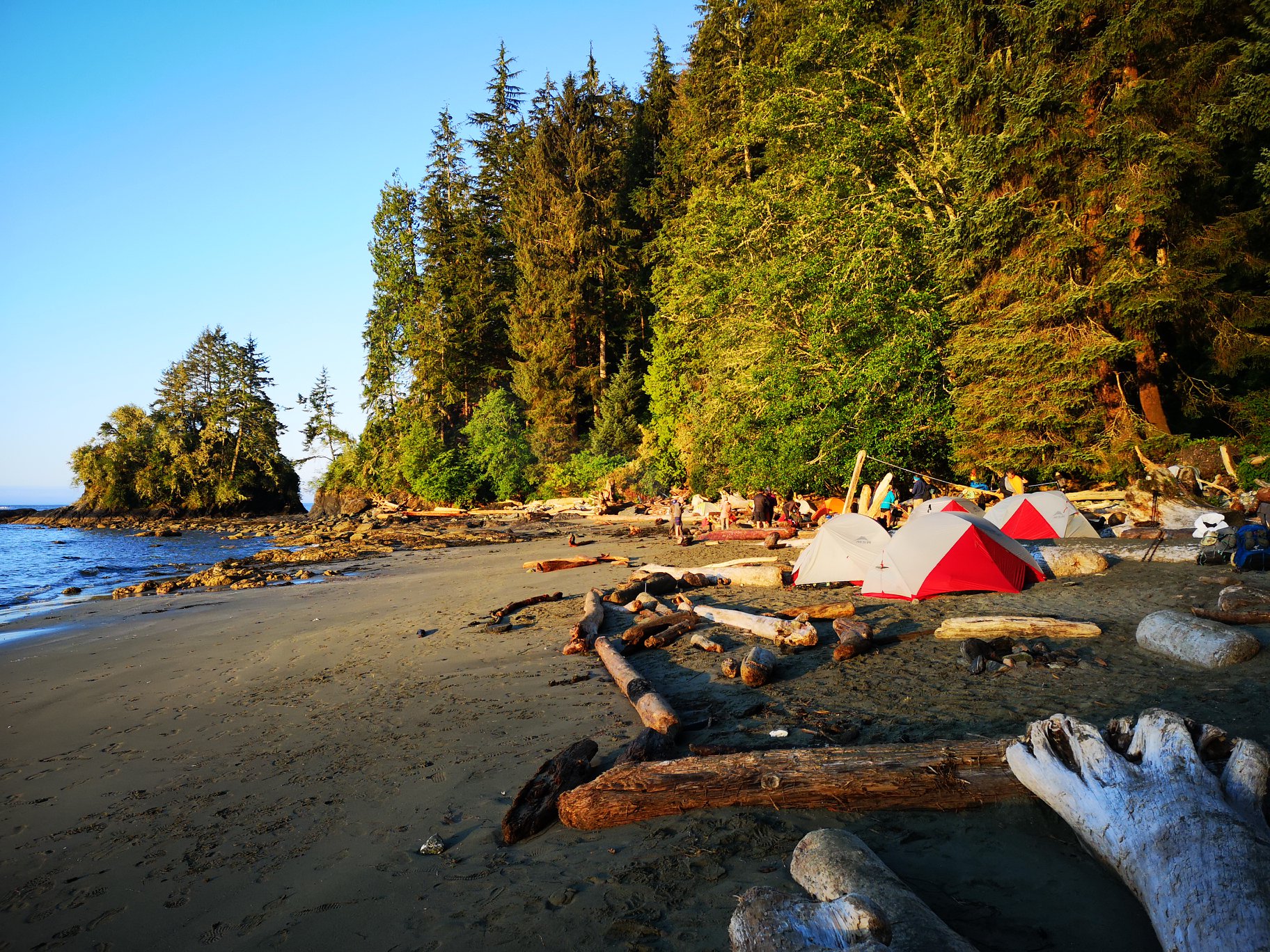
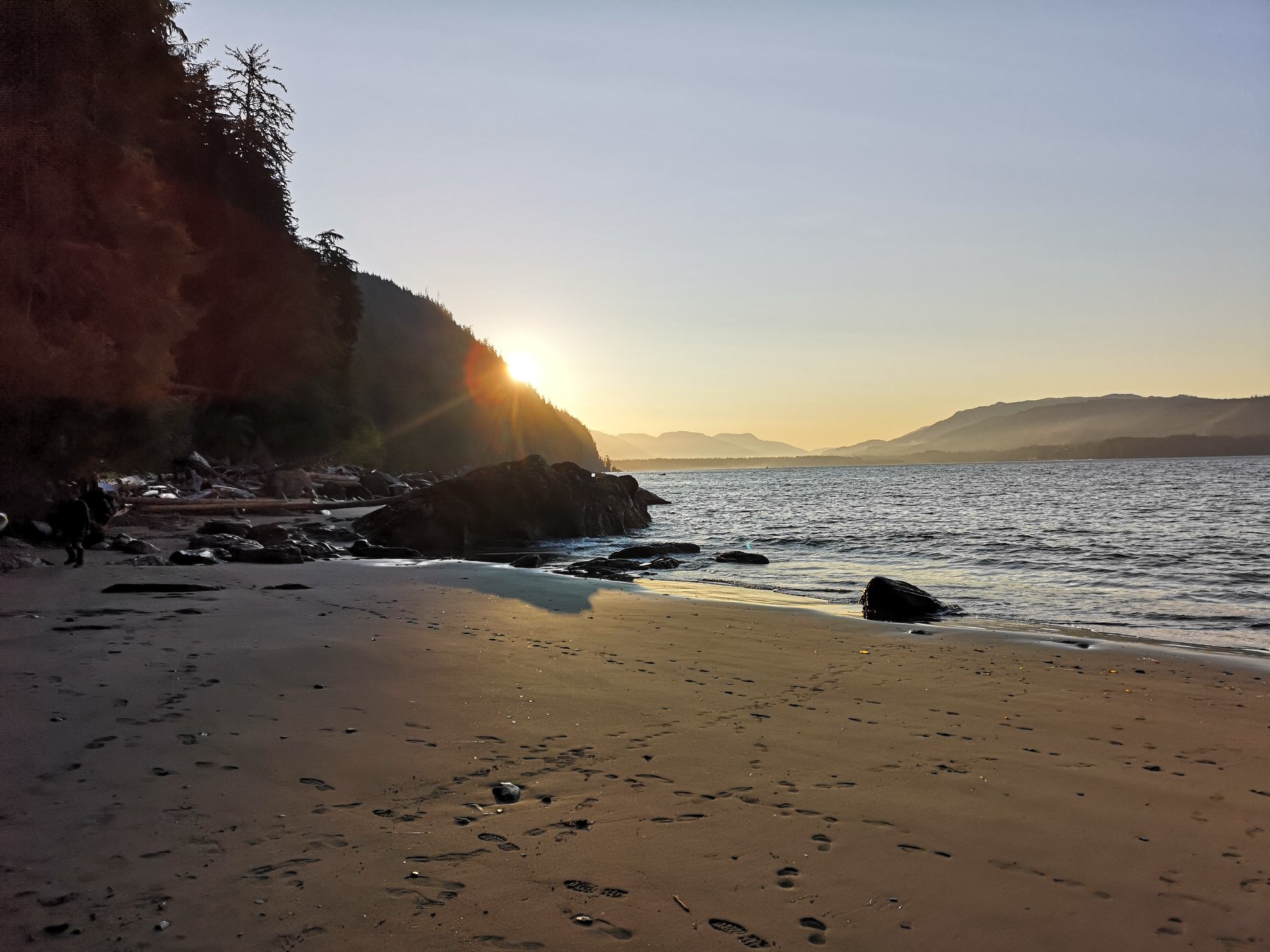
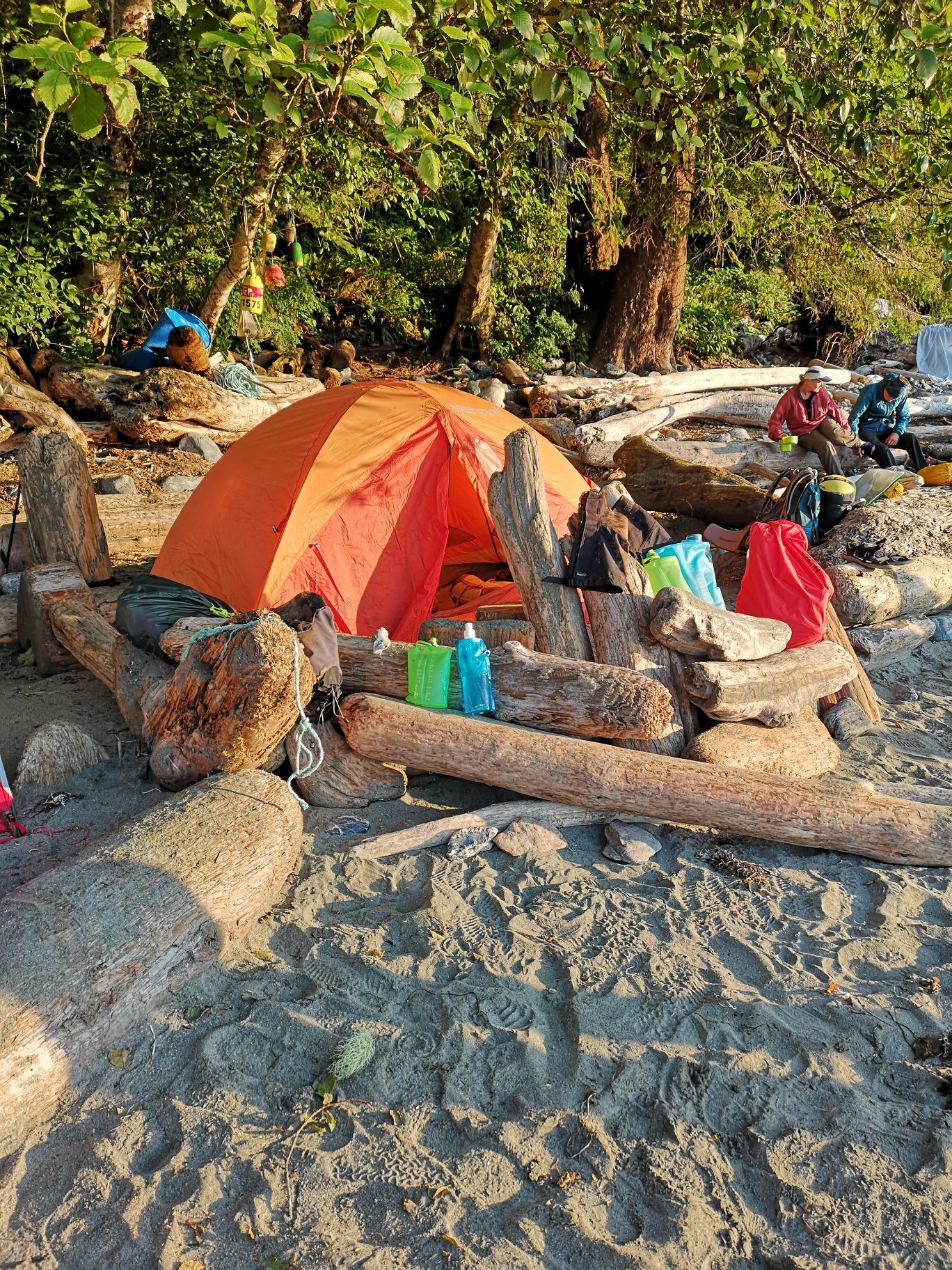
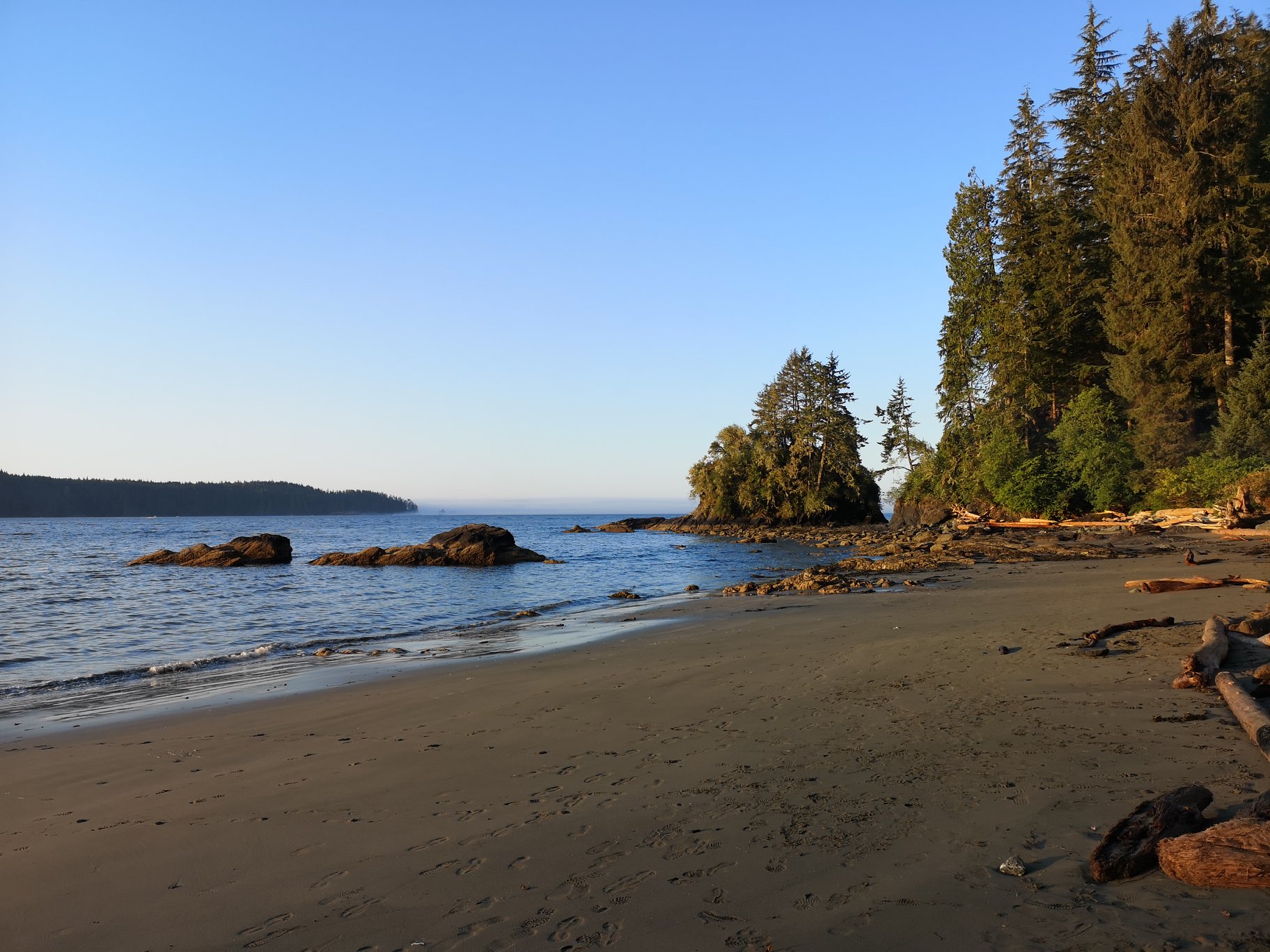
Day 2: Thrasher Cove to Walbran Creek – 12k
We left Thrasher Cove around 7:00 am to take advantage of the low tide and access the beach route to Owen Point. This section is known for its stunning coastal scenery and I wouldn’t have wanted to miss it. It requires careful tide planning. Make sure to check the tide tables before heading out, the beach becomes impassable at high tide, and the water can rise quickly. In the picture below you can see that the tide hits the wall and there’s nowhere to go. Planning is key here.
The Sea Caves
The sea saves are always so worth checking out. If you can plan your trip to be able to see them, it beats the hard forest terrain any day. There was so much to see on this day and around every corner is something new to see and explore.
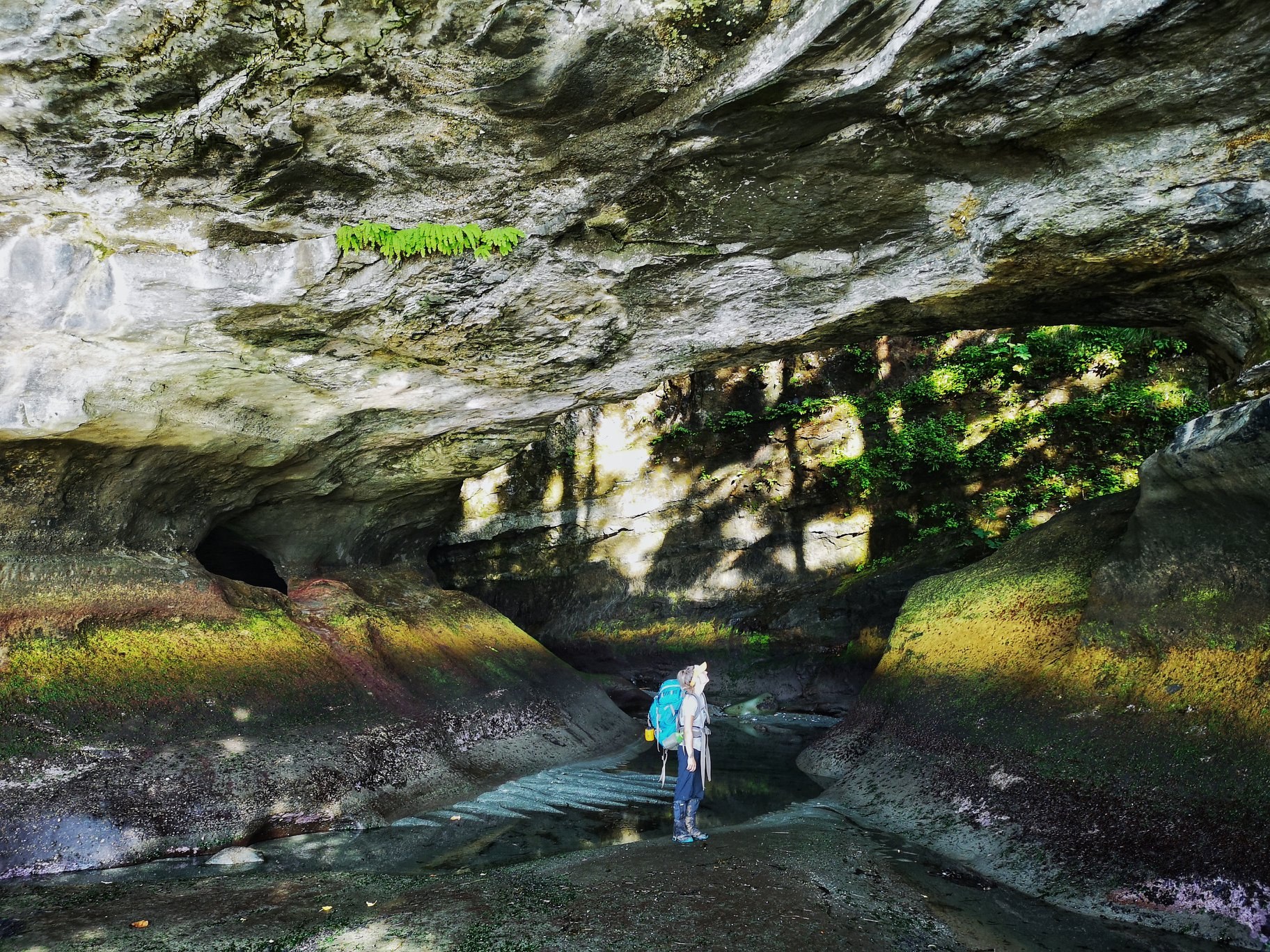
Exploring Owen Point
Visiting Owen Point and seeing the famous hole-in-the-wall rock formation was pretty neat. I like the sea caves more but also the weather was better. Be mindful that the tide moves fast.
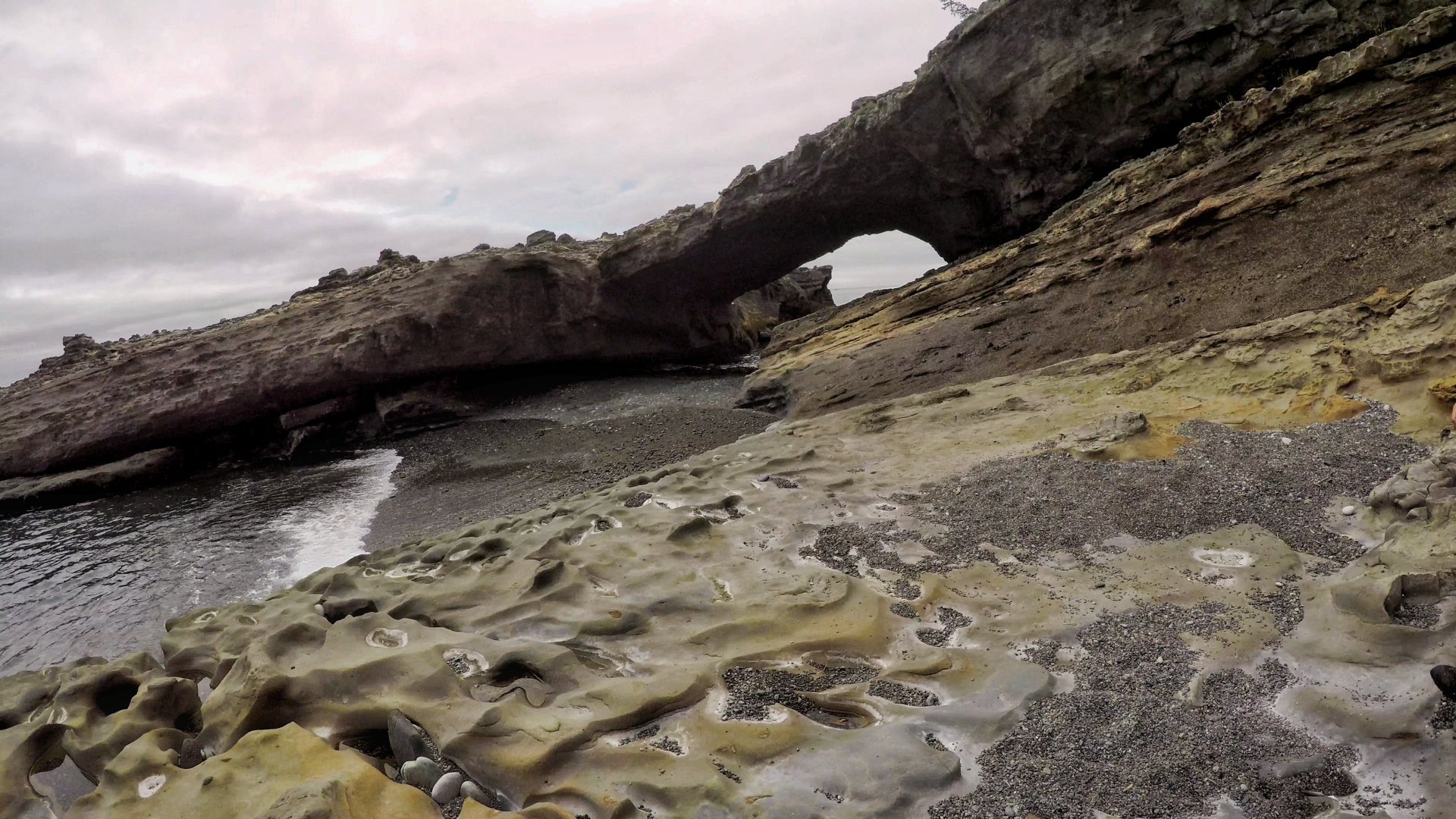
Cable Car Crossings
As we continued along the trail, we encountered two cable cars. These crossings are one of the unique features of the West Coast Trail. Pulling yourself across a river while suspended in the air is both a workout and an adventure.
Arriving at Walbran Creek
By the afternoon, we reached Walbran Creek, our home for the night. The campsite was spacious, with soft sand and plenty of driftwood for makeshift benches. After setting up camp, we took a refreshing swim in the creek. The perfect reward after a day of hiking.
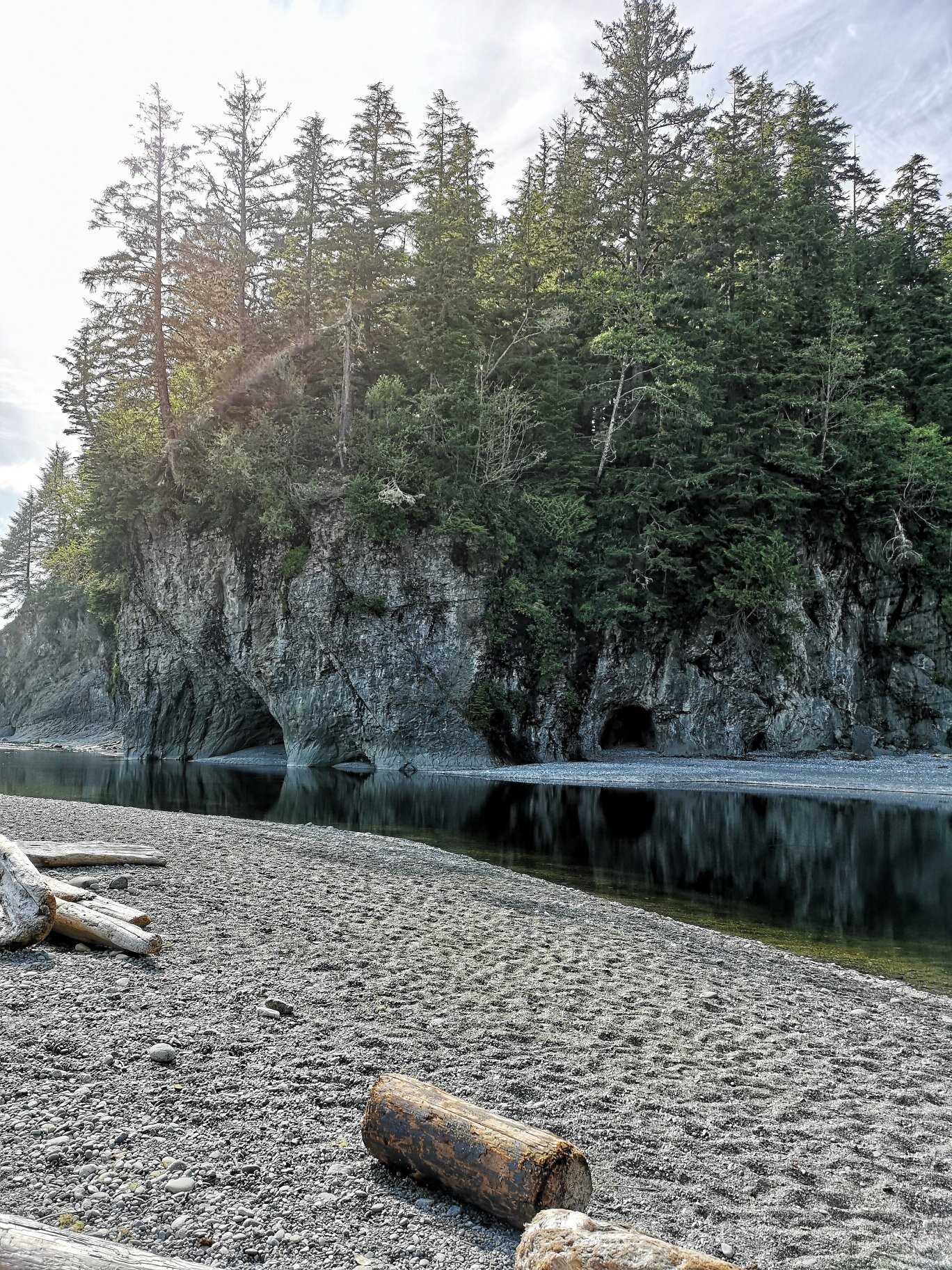
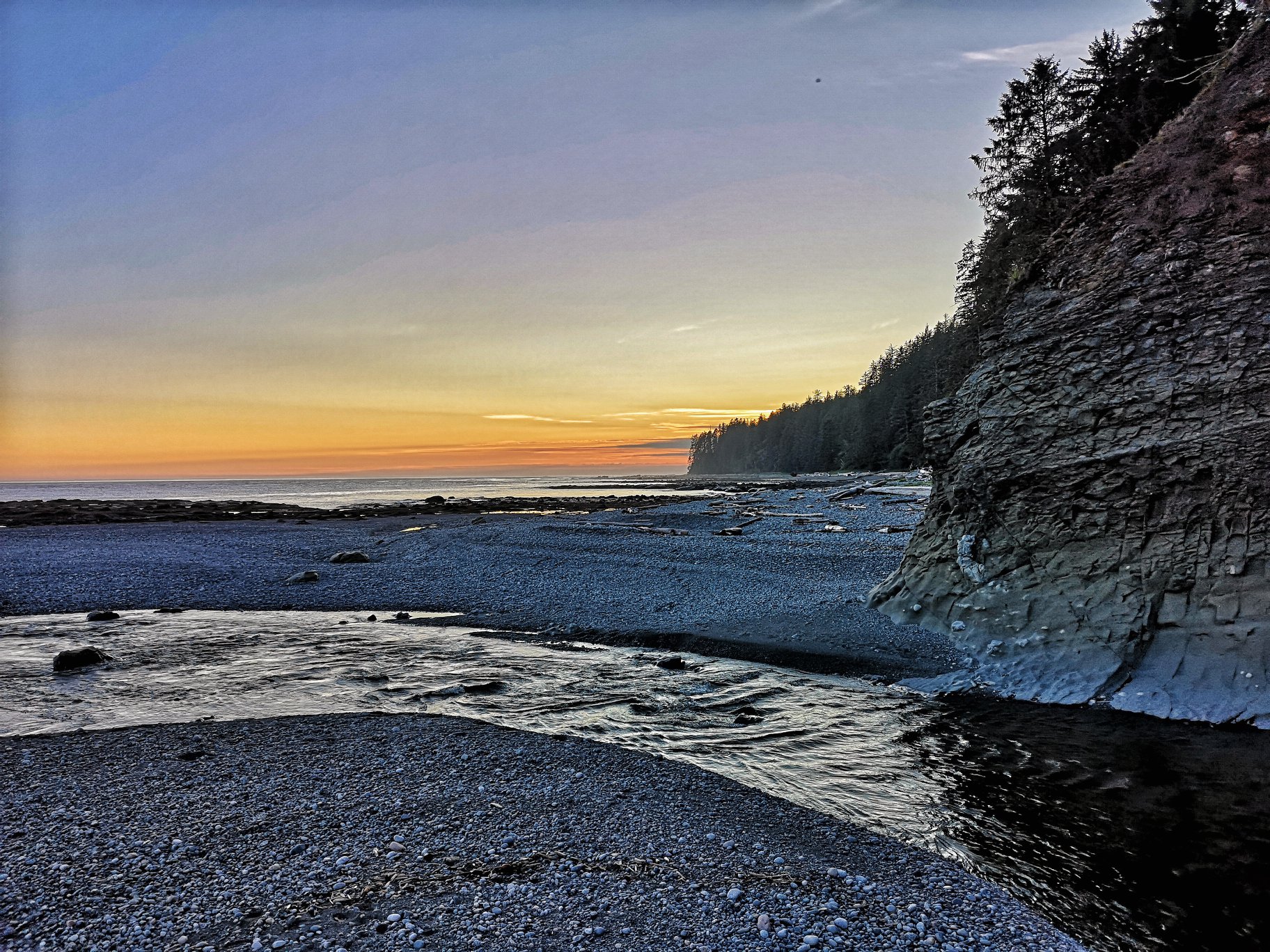
Day 3: Walbran Creek to Carmanah Creek – 14k
Well sometimes things don’t go as planned but could you imagine getting a bladder infection halfway through your hiking trip? Yeah me neither. Everything was beautiful and uncomfortable from this day forward. Night 3 at Carmanah Creek was a friendly one as everyone was in the middle of the trip and feeling good. We met a solo hiker and invited her to our fire. In the pictures below you can see a cable car in the background as well as a sunset view of the lighthouse silhouette.
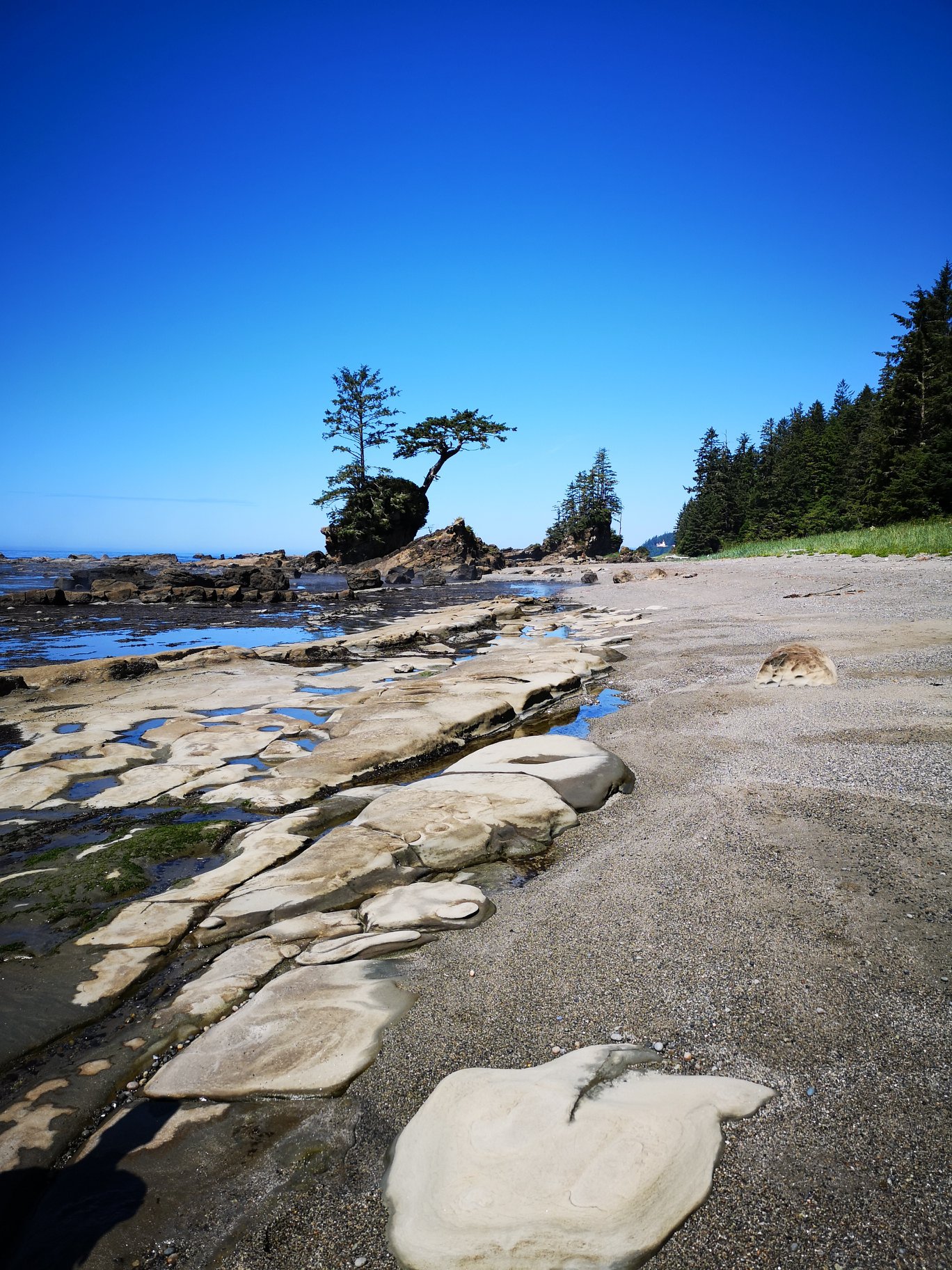
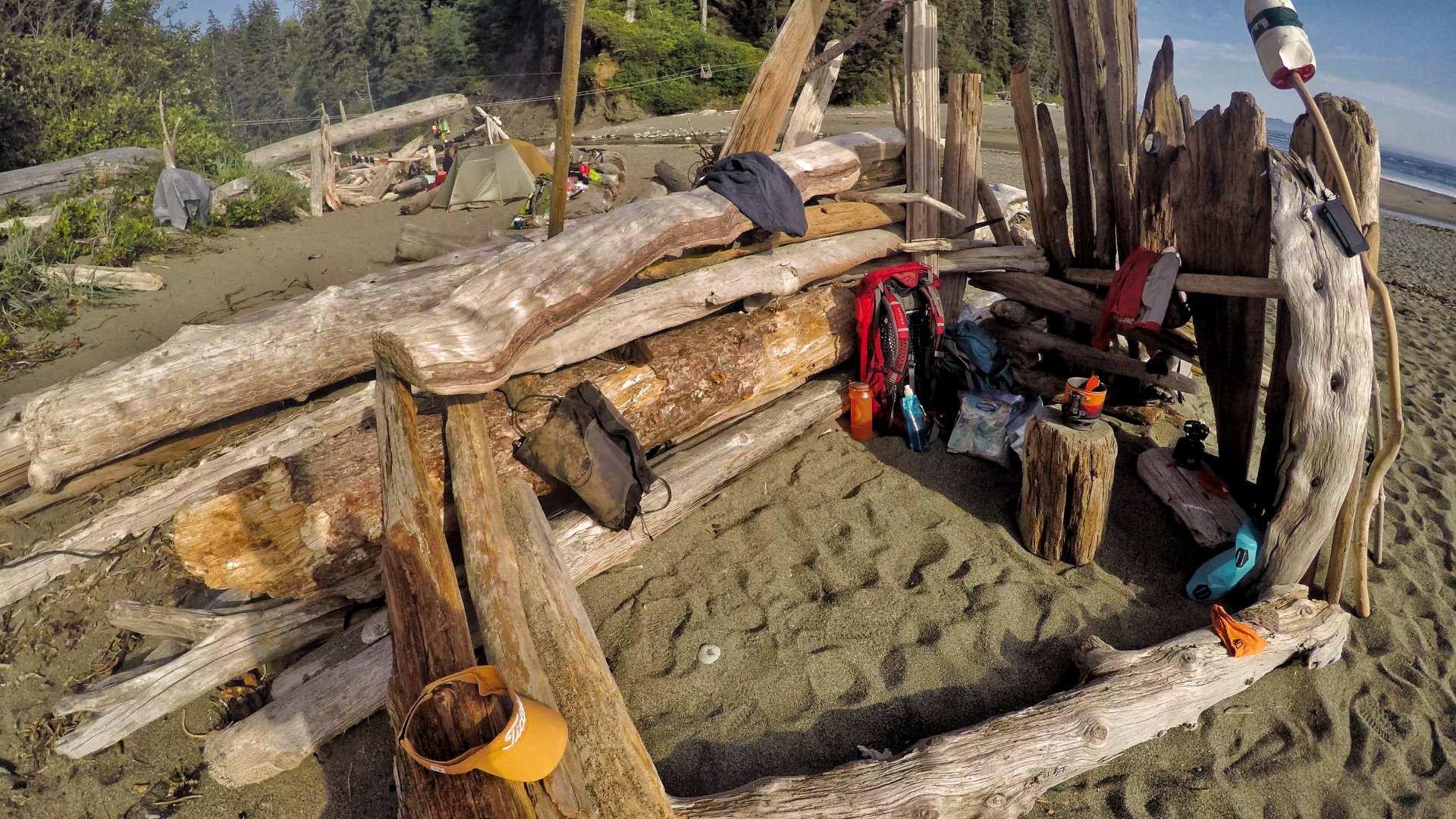
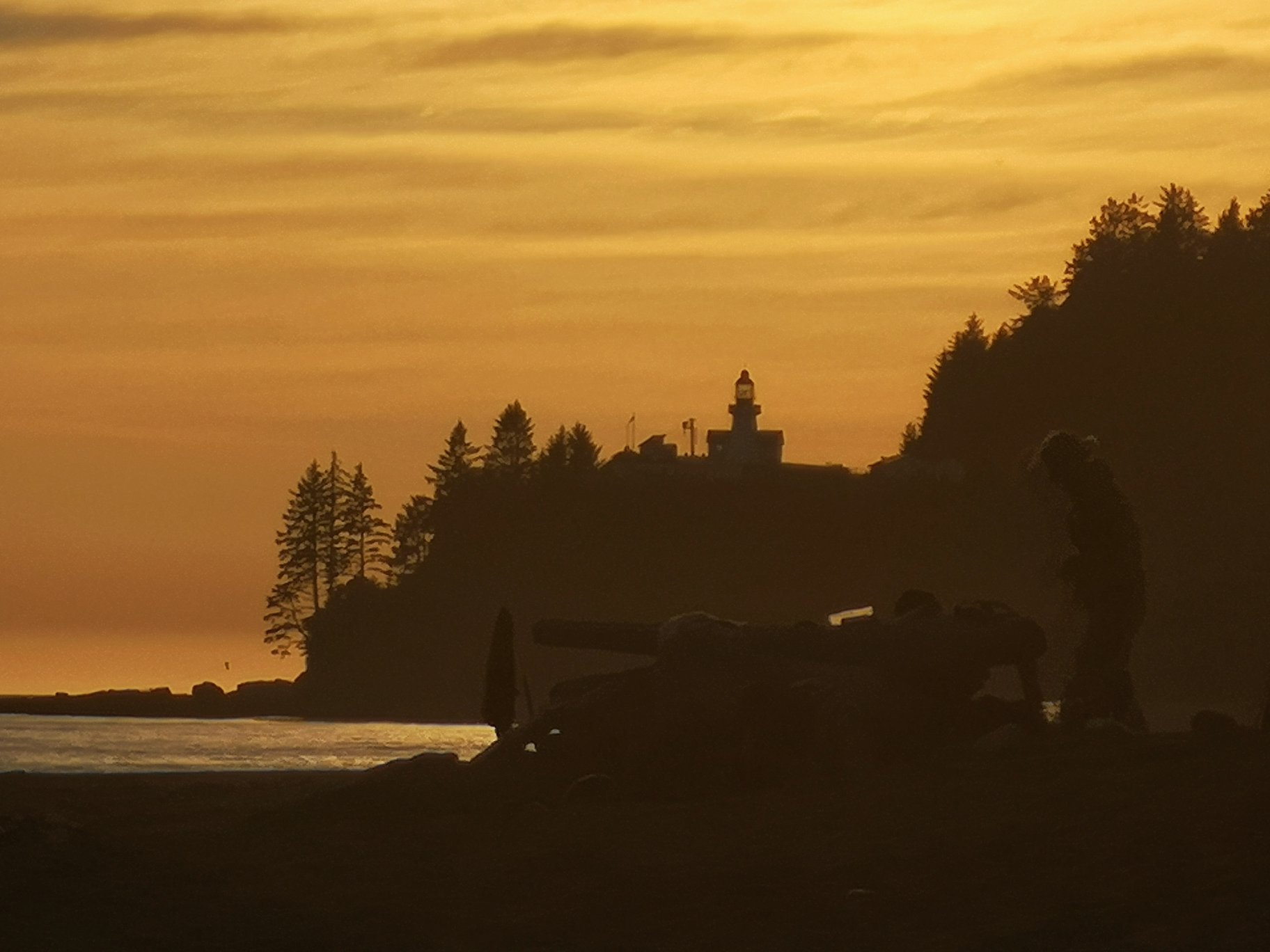
Day 4: Carmanah Creek to Tsusiat Falls – 19k
We set off from Carmanah Creek. Today’s trek would cover 19 kilometers of mixed terrain, from lush forest trails to scenic beach stretches. The day’s goal was to reach Tsusiat Falls, a stunning waterfall that cascades directly onto the beach, a perfect place to camp and enjoy the natural beauty. It was a long day, but we were determined.
Early into the day, we saw a group of sea lions in a far distant rock in the ocean barking away. Then a seal on the beach in the distance. This cute little guy took us off course and the trail head to go back into the trees was a ways back… We ended up running into a very stoned kind fella who was also tripping out about the seal. He suggested we cross the creek and can bushwhack to hop back onto the trail. His more pertinent area you can see a tent in the back.
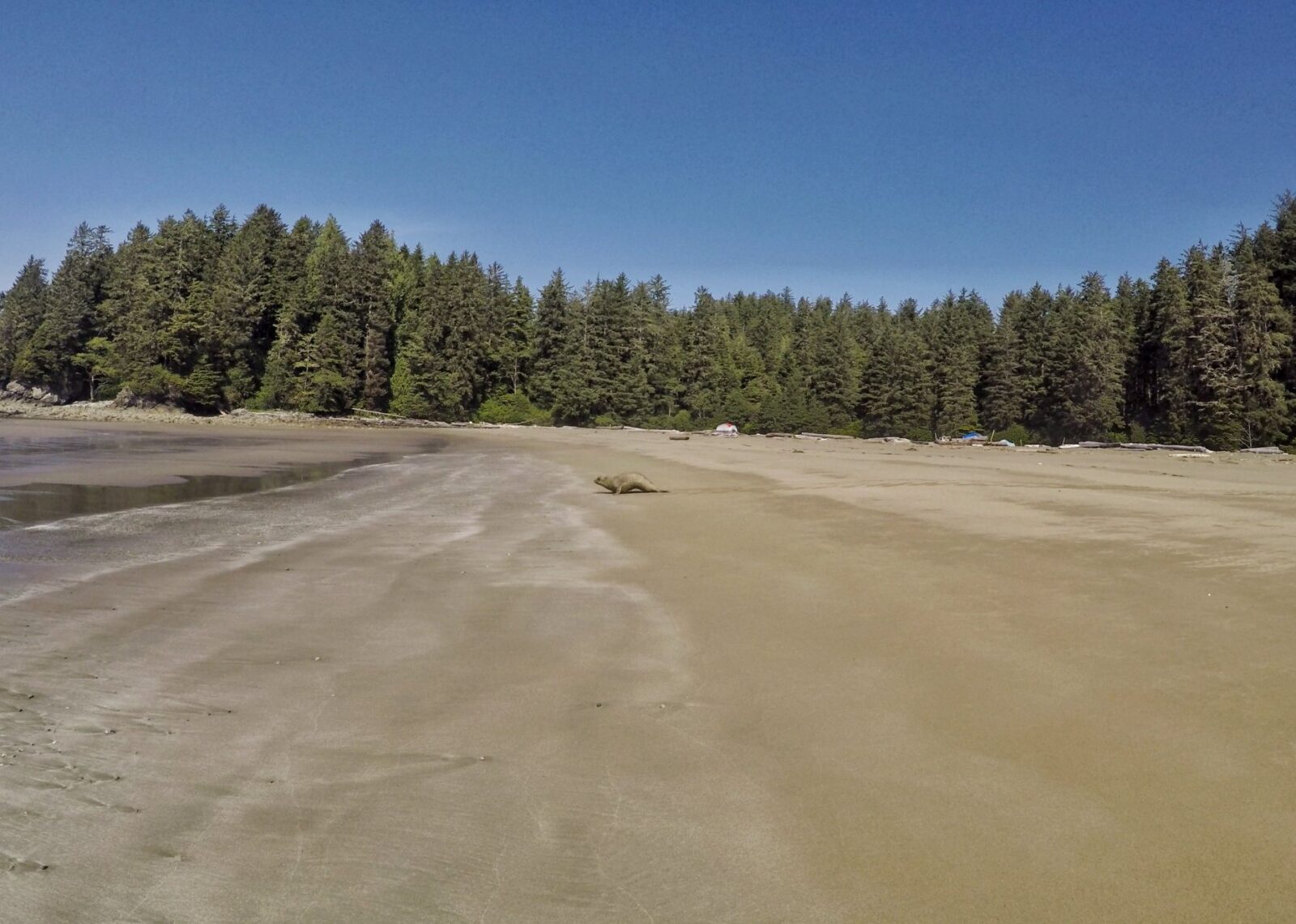
Forest Trails and Suspension Bridges
Some sections were muddy, but the sturdy boardwalks helped us navigate through the worst of it. Along the way, we crossed a few suspension bridges, a thrilling experience with views of the creeks below.
Nitinaht Narrows and the Crab Shack
One of the most memorable moments of the day was arriving at Nitinaht Narrows. This is where hikers take a short ferry ride across the water, operated by the local First Nations. The crossing is a unique part of the West Coast Trail experience, offering a brief break from the trek.
Just beyond the crossing, we made a much-anticipated stop at the Crab Shack. Known for its fresh seafood, this is a must-do for hikers looking to enjoy a warm meal. We treated ourselves to delicious crab, a well-deserved reward that left us energized for the remainder of the day which was still a lot more to go.
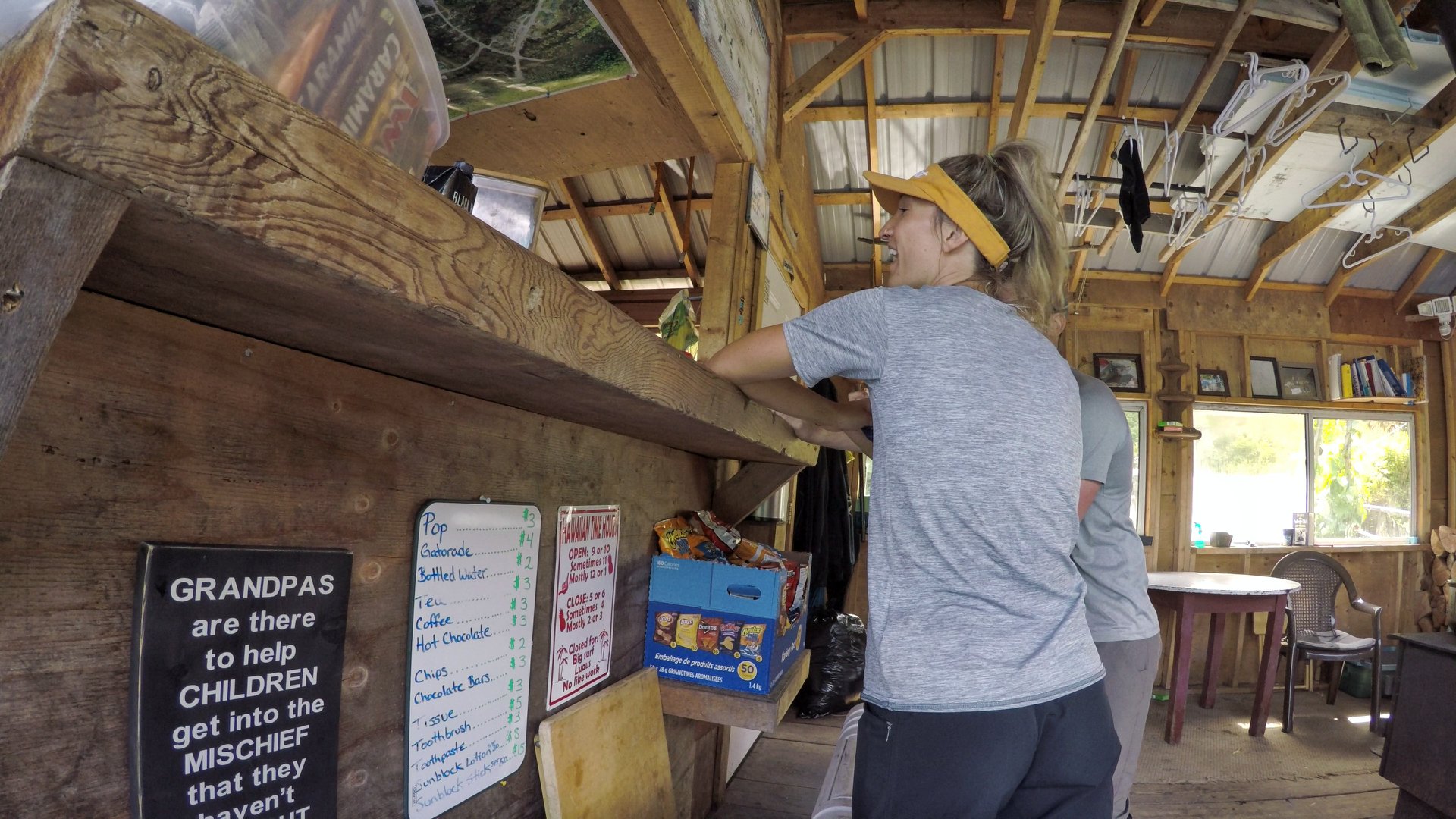
A Long Stretch to Tsusiat Falls
After the ferry crossing, the trail took us through a long stretch of wilderness. Since this section passes near the Nitinaht Reserve, there were no designated campsites, making it a necessary push to get to Tsusiat Falls. It felt like a marathon day, but there was plenty of entertainment along the way… like a random frisbee, some swings, and a hammock.
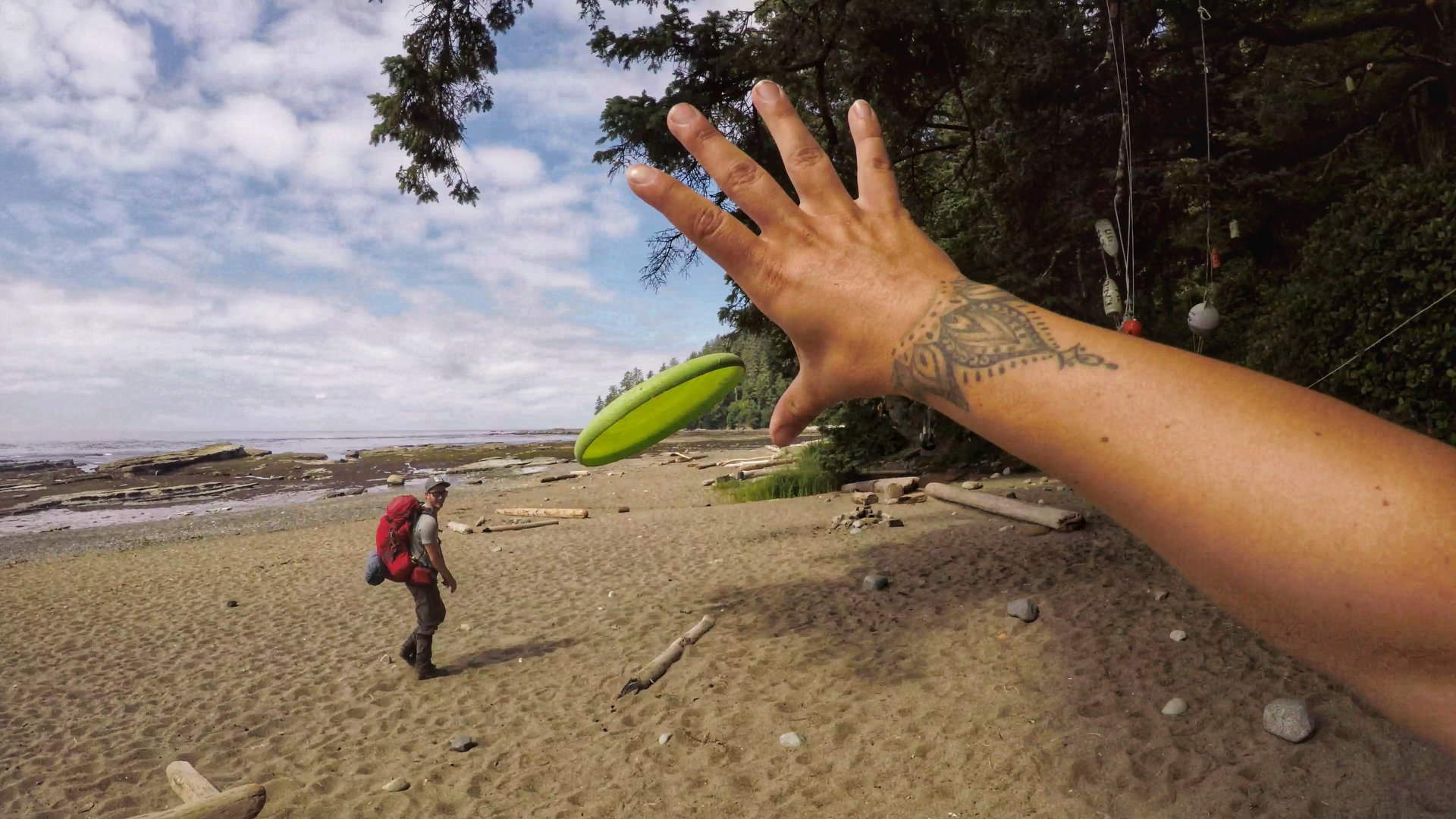
Tsusiat Falls Campsite
As we approached, we could hear the roar of the falls in the distance. The sight of the cascading water tumbling onto the beach was breathtaking. The beach was busy, with a lot of hikers cooling off in the waterfall’s pool. It felt like a public beach in the middle of nowhere, a surreal but beautiful experience.
We were incredibly lucky to snag an epic campsite — a secluded spot tucked into a small cave just as another group was leaving. Sheltered from the crowds, it was the perfect hideaway to relax and enjoy the evening. A refreshing swim in the natural pool beneath the waterfall was great, not to mention the weather the entire time. Apparently a week before it was pure rain and MISRABLE said the people at Gordon River entrance that worked there.
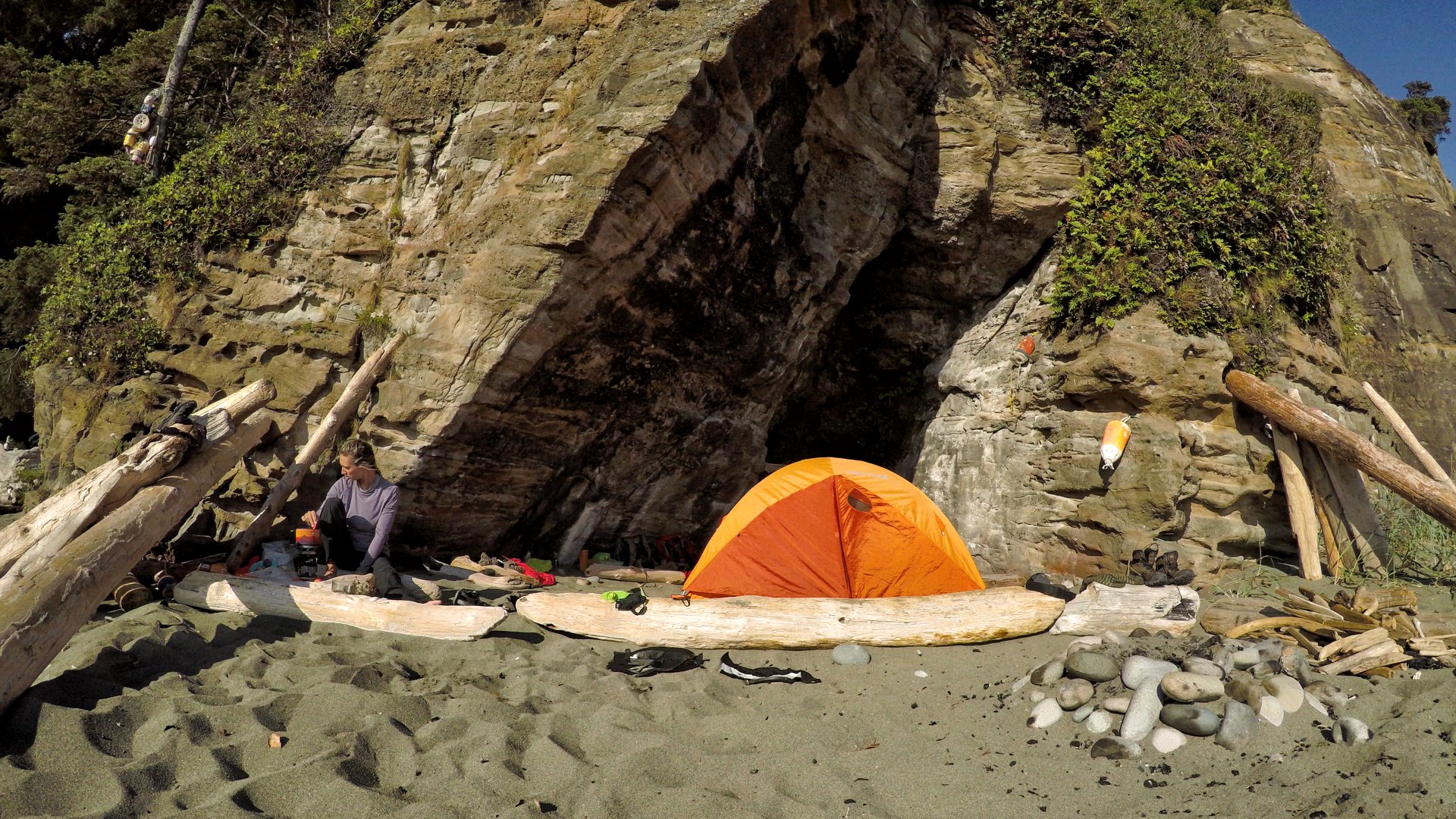
Day 5: Tsusiat Falls to Tscowis Creek – 8.5 k
This was a short and sweet day with not much to report. The entire journey of the West Coast Trail is an amazing adventure. At this point, the people passing you have just begun their trip and all smell like strong laundry. This was a good day for reflection and simply just enjoying the surroundings at a more laid-back pace.
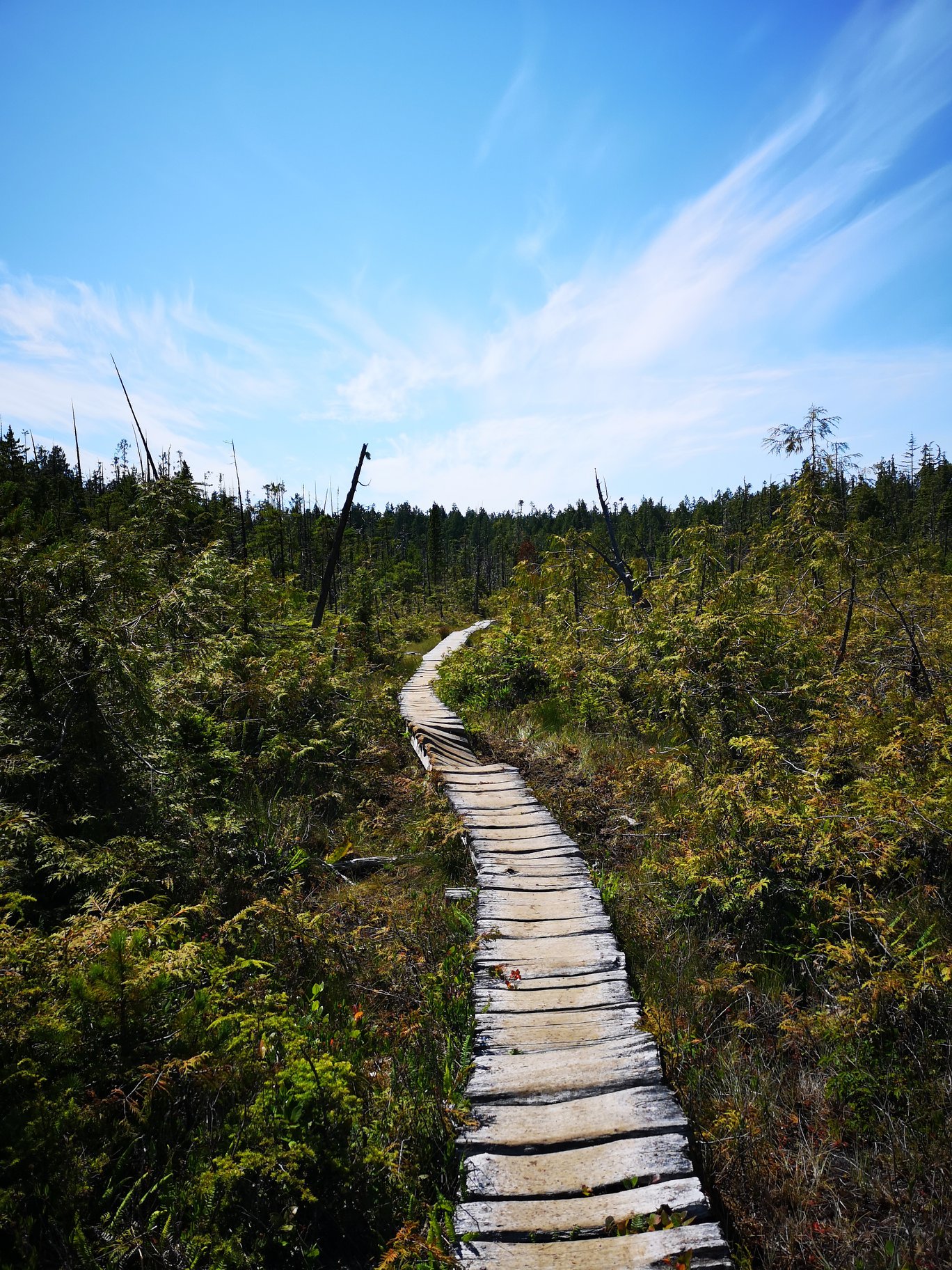
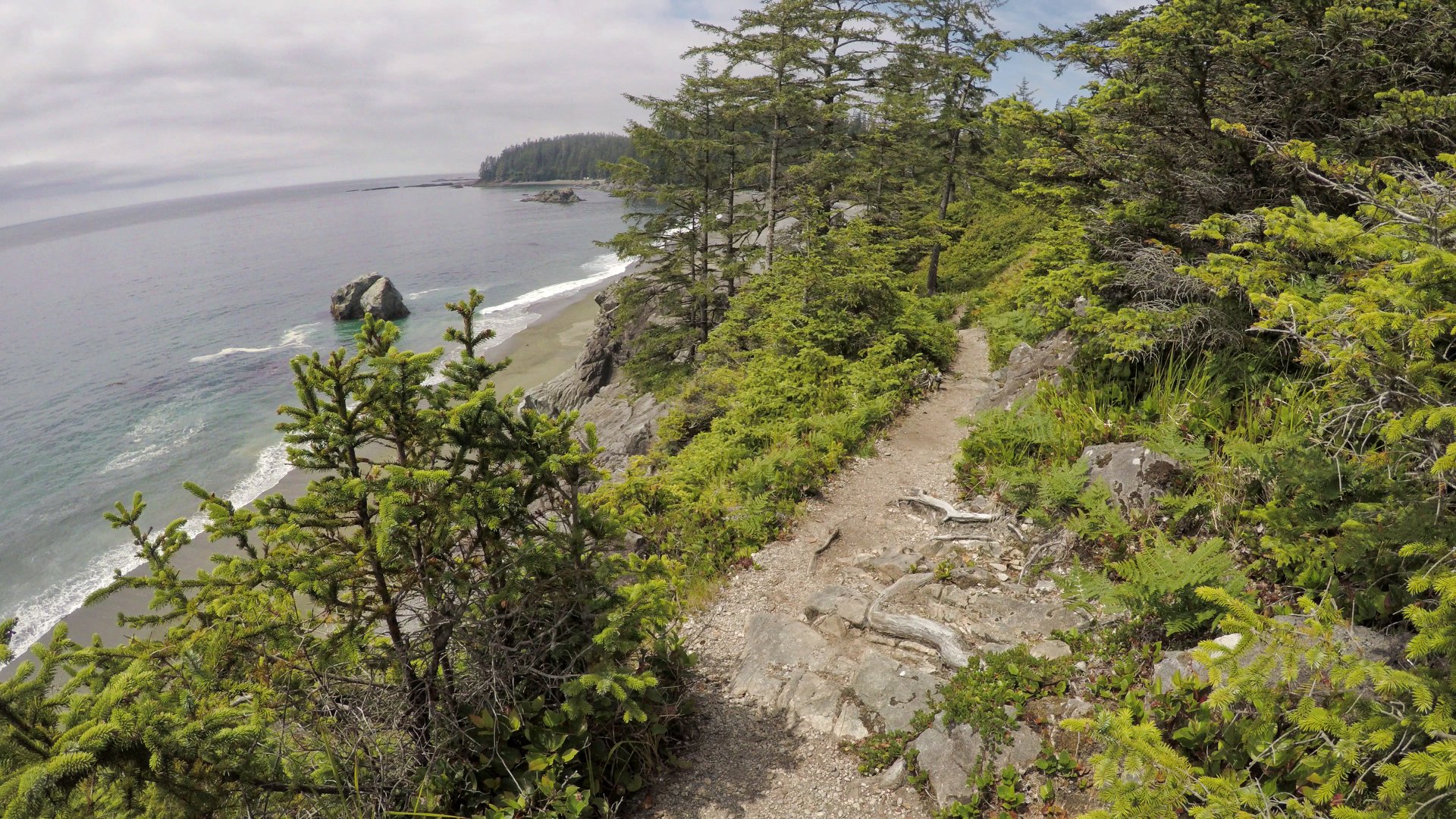
Day 6: Tscowis Creek to Pachena Bay Campground – 17k
The final stretch was a familiar one. I spent almost every summer camping at Pachena Bay Campground. It used to be a remote 2+ hour drive on a gravel road, but it has recently been paved, making it more accessible. I would often day hike from the campground onto the West Coast Trail, so this part of the journey felt like coming home.
Mild Terrain and Scenic Views
The best part about this day was the terrain — pretty mild and smooth flowing compared to previous days. It felt like a welcome change for our tired legs. The trail wound through lush rainforest, occasionally offering glimpses of the ocean through the trees.
We took a break at the lookout point and listened to the fascinating sounds of the sea lions. When they all barked together, it echoed across the water — a wild and unforgettable experience. It was hard to tear ourselves away, but with a pickup scheduled, we had to press on.
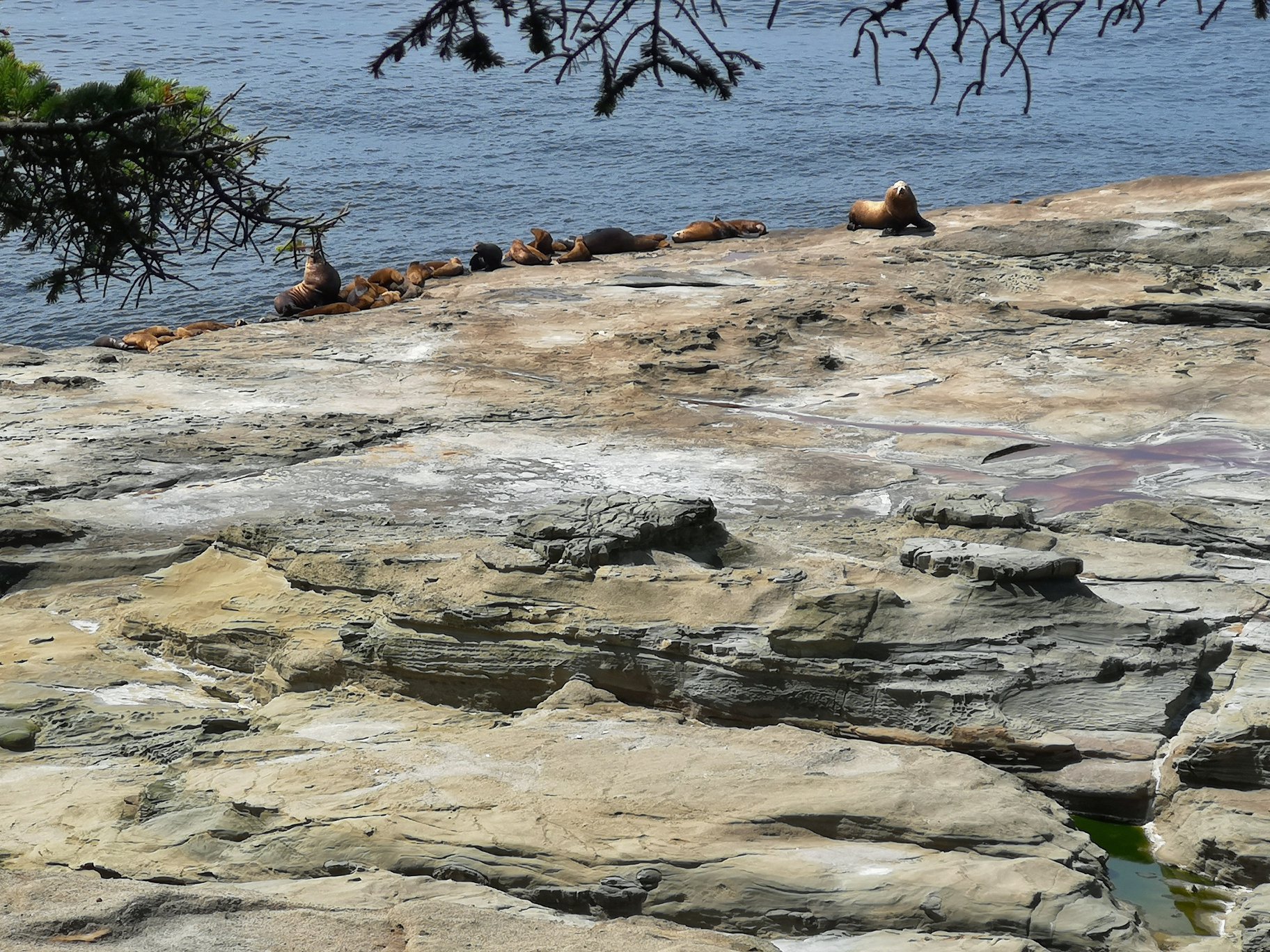
Reaching Pachena Bay
The official end point of the West Coast Trail came into view, marking the completion of our adventure. But before leaving, it’s worth checking out Pachena Bay Beach. The wide, sandy beach is stunning, and the bay’s calm waters are perfect for dipping your feet and reflecting on the journey.
The campground has a small store where you can grab snacks like chips and pop — a simple treat that feels luxurious after days on the trail. If you plan to stay the night at the campground, consider bringing coins for a hot shower.
Watch a short Video of My West Coast Trail Trip
Major Key Points
- Plan & learn the tides.
- Filter your water & know where your water sources are.
- Secure your food in the provided bear caches.
- Pack the right gear but only what you need.
- Leave no Trace – respect the environment.
- Plan ahead – reverse and pay your fees.
- Plan for the weather, it can be a wet one.
- Bring some extra cash for a fresh seafood meal.
- Expect mud even if it’s sunny.

